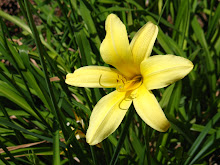“Among many names, Louis the XIVth was also popularly known as The Sun King (in French le Roi Soleil) because of the idea that, just as the planets revolve around the Sun, so too should France and the court revolve around him. As a result, he was commonly associated with Apollo Helios, the Greco-Roman god of the Sun.” (source)
In 1660, the king married Maria Theresa. He was kind to her, but very unfaithful. He pursued his sister-in-law, then her maid-of-honor, then that maid’s friend, then the governess that friend hired for her children. The governess was Madame de Maintenon, and strangely enough, she became friends with the queen. In 1683, the queen died in her arms, and Madame de Maintenon secretly married Louis XIV. However, she could not become the queen. (source)
“In 1667 Louis XIV decided to move the royal household and government from Paris to Versailles. The center of his new palace was the hunting lodge his father had built in 1624. Built in a Boroque style, the Palace of Versailles was enlarged by architects Le Brun and Le Vau. King Louis XIV, the Sun King, had an enormous influence on the art and architecture of the time. Boroque architecture was fairly geometric which was ‘in keeping with the French political system—absolute monarchy personified by King Louis XIV.’ Because he is referred to as the Sun King, the architects gave the palace a room with ‘solar illusions.’ This Hall of Mirrors added to the elegant and majestic quality of the Boroque palace. Many years later in 1919, Germany ended the war by signing the Treaty of Versailles in the Hall of Mirrors. Another characteristic element of the Boroque time period was the elaborate gardens. To enhance his Palace of Versailles, King Louis XIV hired landscape architect Andre Le Notre to design the Boroque gardens surrounding the large estate. Pools and fountains, which also bedeck the vast landscape, are other features relevant to Boroque style. In sum, the king’s influence on architecture of the time is extremely evident in the Palace of Versailles.” (source)
There was also quite a bit of war during the reign of Louis XIV. The Thirty Years War ended in 1648, and from 1648-1653, there was civil war and unrest. In 1658, England helped France defeat Spain. In 1667, there was the War of Devolution with Spain, from 1688-1697, the Nine Years War, and in 1701-1714, the War of the Spanish Succession. (source, Lewis 76)
Between 1701-1712, four of the king’s loved-ones died. He filled his final years with persecution of the Protestants, and on September 1, 1715, King Louis XIV died from gangrene. (McConville 20)
Works Cited
Lewis, W. H. The Splendid Century: Life in the France of Louis XIV. Prospect Heights, Illinois: Waveland Press. 1953.
McConville, Brendan. The King’s Three Faces: The Rise and Fall of Royal America, 1688-1776. Chapel Hill, North Carolina: University of North Carolina Press. 2006.
